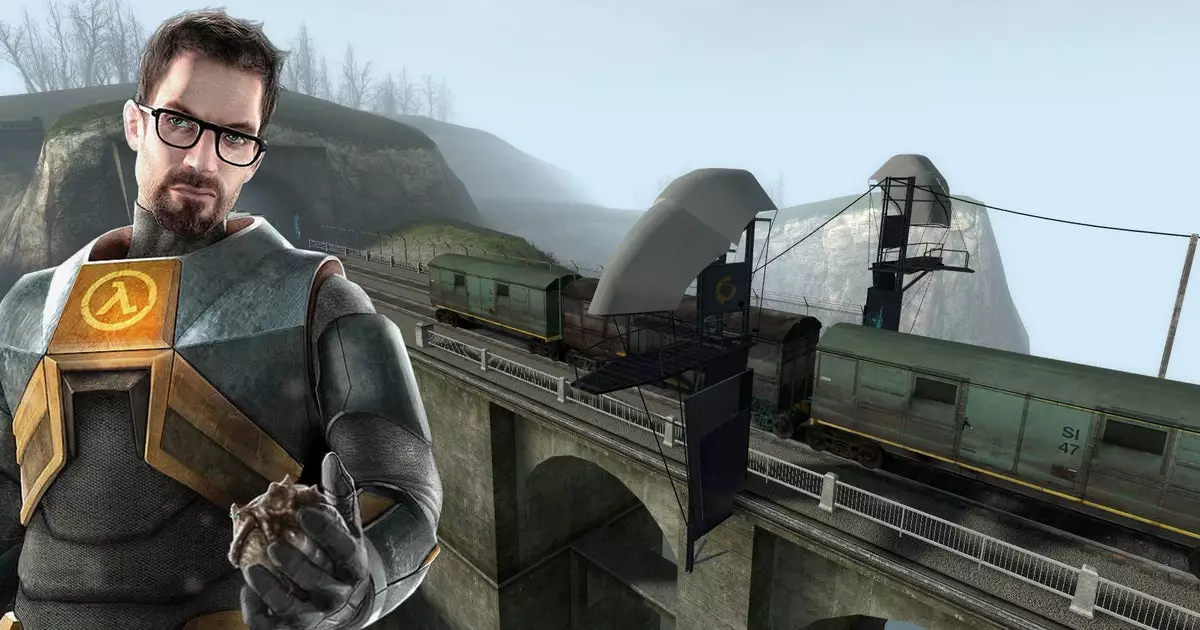In the realm of video games, few titles hold the nostalgic and cultural weight that Half-Life 2 does. Released in 2004, it set a benchmark for storytelling, gameplay innovation, and environmental immersion. Yet, even after nearly two decades, the game continues to evolve through minor tweaks and updates, proving that its legacy is still alive and adaptable. The recent update restoring the train’s speed to its original velocity exemplifies how small changes can breathe new life into an old classic, challenging players’ assumptions and rekindling their engagement with a game they thought they knew thoroughly.
This particular adjustment isn’t merely about physics or code tweaks; it symbolizes a broader principle. Games from the early 2000s, often viewed through a lens of nostalgia, are being posthumously refined to align better with their initial design intents. Valve’s decision to modify the speed of the train in “Highway 17” is a testament to the enduring importance of design integrity, reminding us that even minor gameplay details can have a profound impact on player experience. It challenges the notion that older games become static relics; instead, they can be living entities, continuously shaped by dedicated developers and passionate fans who refuse to let their favorites fade into obscurity.
The Significance of Maintaining Authentic Player Challenges
Why does restoring the train’s original speed matter? The level “Highway 17” was notorious for its tense set-piece involving a blaring whistle and an approaching train—a moment designed to test reflexes and quick thinking. Over time, changes to physics updates and game balance shifted this challenge, transforming a nail-biting race into a more controlled, and arguably less intense, experience. For longtime fans, this loss of difficulty represented a diminishment of the game’s core thrill.
By returning the train to its initial speed, Valve is reaffirming the importance of preserving the original difficulty curve—those spikes of adrenaline that defined the game’s identity. It’s a recognition that challenge is fundamental to player agency; to beat the train is to master the game, not to passively wait for it to pass by. Such actions emphasize that retro-game modifications aren’t about infantilizing or overly sanitizing the experience but about honoring design choices that evoke specific emotional responses. The small act of tweaking a number in the code thus becomes a statement: we’re committed to keeping the authentic spirit of the game alive, even after all these years.
Beyond the Main Event: The Quiet Persistence of Bugfixes
While the train’s speed resurgence is a notable highlight, recent patches also include corrections to NPC collision issues and gameplay obstructions—those tiny, often unnoticed glitches that slip through the cracks of even the most meticulous software. The persistent effort to fix NPCs shooting through walls or Alyx obstructing the player’s path underscores a broader dedication to polish that many gamers overlook. These surface-level fixes may seem trivial but are emblematic of a developer’s relentless pursuit of perfection.
The fact that Valve continues to perform such maintenance long after the game’s debut reveals an interesting paradox: the vintage title is being treated as an ongoing project, rather than a finished product. This mindset echoes the philosophy of preserving historical artifacts, allowing them to evolve rather than decay. It also raises intriguing questions about the role of community and developer stewardship—whether such updates are driven by official policy or fan feedback—and how this ongoing care affects a game’s longevity.
In essence, Valve’s approach to these minor tweaks challenges us to redefine what it means for a game to be “finished.” It’s no longer just a matter of releasing a product and moving on; it becomes a continuous dialogue between creators, players, and the product itself. Through this lens, outdated titles become dynamic art forms, capable of surprising us anew, even after many years have passed.
—
This examination reveals that small updates, often dismissed as mere technical footnotes, carry immense symbolic weight. They serve as acts of preservation, affirmation, and re-engagement—allowing beloved classics to continue inspiring new generations of gamers while respecting the intricate design work of their creators. Ultimately, these continual refinements exemplify the vibrant, living history of gaming—one where old favorites aren’t merely relics but active participants in today’s evolving digital culture.

